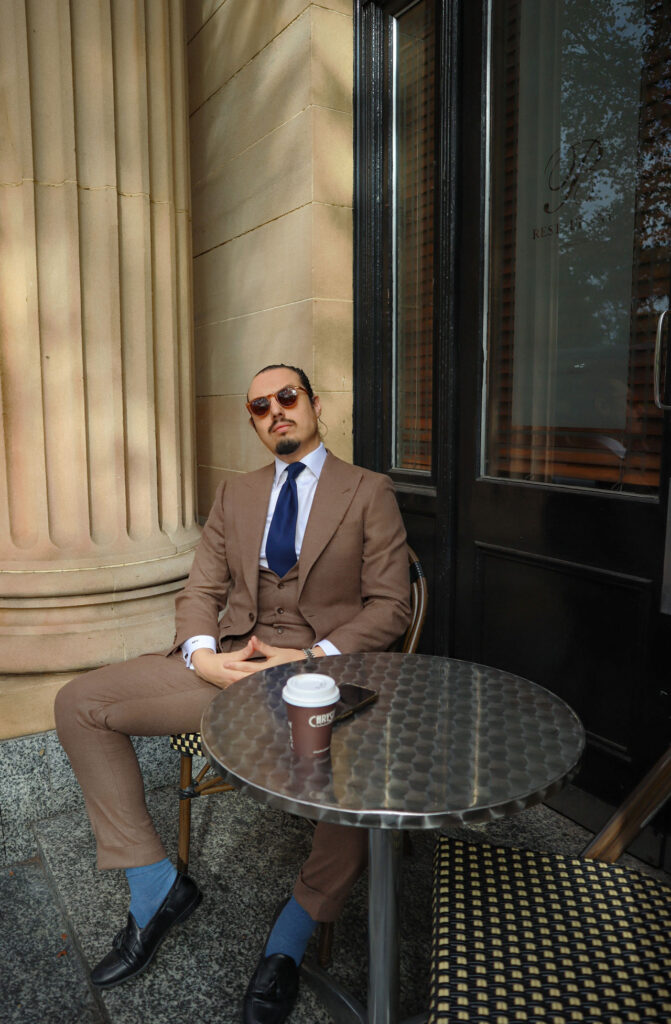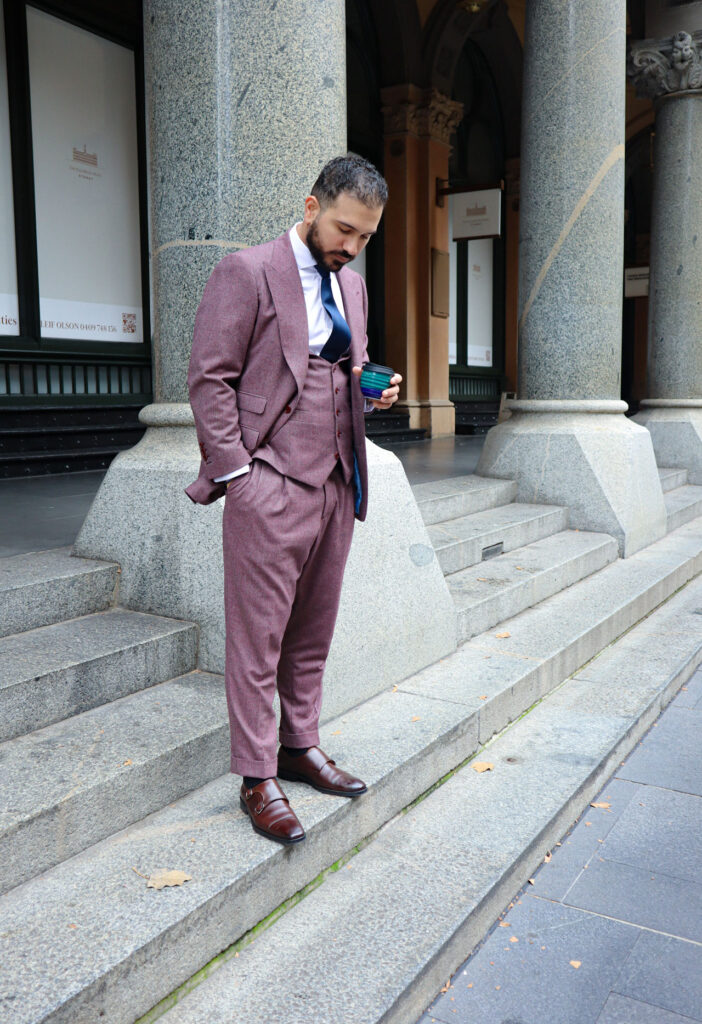Premium quality fabrics that strike the balance between comfort, functionality and enduring style make the perfect foundation for achieving effortless wear — whether you’re dressing for the office or a special occasion.
Contemporary detailing and perfect tailoring also significantly impact a suit’s overall appearance, and there is no hiding the finish of shiny synthetic blends and frayed threading. Investing in high-quality suit fabrics makes all the difference, signalling a sense of refinement and delivering comfortable garments that stand the test of time.
Want to create a suit that will carry you from day to night with confidence and polish? Our guide will show you how to check the quality of your suit fabric and create a garment that will last you from season to season. Read on and get ready to suit up!

Thread count matters
The thread count and GSM (grams per square metre) are one of the major factors in verifying the quality of a suit’s fabric and how well your suit breathes and performs. While lower GSM and lightweight fabrics like linen and cotton allow heat to dissipate in the warmer months, their flexible material naturally endears them to show the effects of all-day wear through wrinkling.
On the other hand, high GSM fabrications such as thick wool and tweed are best suited for cooler environments, where they leave a thicker layer of warmth. Still, they are highly durable and resilient with repeat wear. Over time, they will continue to maintain a sense of structure.
- 200 – 230 gsm — Lightweight linen and cotton fabrics ideal for summer and humid climates.
- 240 – 290 gsm — Light to mid-weight fabrics that are comfortable to wear in spring, late summer and early autumn.
- 300 – 360 gsm — A moderately heavy fabric that is a great choice for durability and cold climates.
- 370 – 540 gsm — Heavy fabrics like wool and tweed help add warmth during the winter.
The super count is another factor in your suit’s fabric quality. While descriptions like Super 130 and Super 150 sound like a model of a car, they relate to the grading and thickness of the fabric material spun. Depending on your preferences and how often you wear a suit, sometimes a higher number isn’t always better. High super counts are softer and lighter — however, they’re more prone to wrinkling and are more susceptible to damage.

Make deeper customised detailing and add texture and visual interest with the type of weave
If the thousands of different colourways and fabrications available from various textile mills weren’t enough, considering the weave of your fabric choice can make subtle differences that can dramatically affect the look of your suit. From increasing your suit’s durability to leaving an embossed finish, paying attention to how it has been constructed will help you confirm your suit fabric’s high quality.
- Warp and weft — A basic plain weave where horizontal and vertical threads crisscross to create a uniform fabric.
- Piquet — A textured weave with raised patterns or ridges that are often used for durable and decorative fabrics.
- Oxford — A basket weave with a prominent chequerboard pattern, known for its softness and wrinkle resistance.
- Twill — Twill weaves like flannel, tweed, herringbone and houndstooth feature a diagonal pattern that can use a higher thread count for thicker and warmer fabrications.
- Poplin — A lightweight plain-weave fabric with a fine, closely spaced horizontal rib or corded texture.
- Two-fold — Refers to fabrics made by twisting two yarns together for increased strength and a finer finish.
Consider your fabric choice
How well your suit performs in any environment will depend on your fabric selection. Investing in a number of suits tailored to different occasions and seasons will ensure that you’re always dressed the part.
- Wool
Wool is a classic and versatile fabric commonly used in suits for its excellent insulation, breathability and wrinkle resistance. Ranked as one of the highest quality suit fabrics, it drapes elegantly off your physique, holds its shape and is naturally temperature regulating to match most climates.
While sheep and lamb’s wool are the typical choices, premium options include merino wool and cashmere. Worsted wool is another alternative that only uses longer stands to create hard-wearing, exceptionally resilient fabrics.
- Cotton
Best suited to create casual silhouettes and wear in warm weather, cotton fabrics exude a relaxed fit with less structure and have a more casual drape. However, cotton can wrinkle easily and may require regular dry cleaning to maintain a crisp finish.
- Linen
Linen suits are highly breathable and lightweight, perfect for hot and humid climates. With a relaxed and natural aesthetic where a minor wrinkling adds charm, they offer a laid-back yet sophisticated look that is ideal for wearing on casual Fridays in the office to festive nights out and daytime events.
Like silk, linen provides exceptional comfort and breathability; however, it’s prone to deep creases, which may require frequent pressing to restore them to their best.

Suit up in high-quality suit fabrics at Woolcott St
Whether you want a suit for special events or business suits for the office, quality suit fabrics will ensure your elevated ensembles last as long as their timeless designs. For styles that stand the test of time, Woolcott St carefully sources its fabrics from premium mills recognised for their quality, durability and enduring style.
Book a consultation with us today, and we’ll help you design a custom suit exclusively designed around your needs and preferences.
For more information, we invite you to review our guides on how to wear a modern suit or how to pair a suit to your body type.


